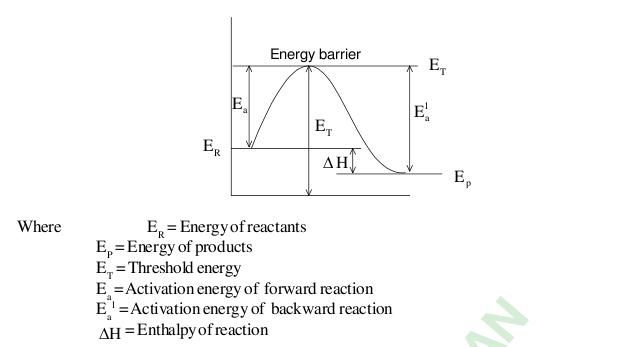Q3.. A particlemoves towards a concave mirror .f=30cm,along da axis ans with constant speed of 4cm/sec.At the instant when the paricle is 90 cm from the pole
A)velocity of image is 1cm /sec
B)velo.of image wrt particle 5cm /sec
C)particle and image move towrds each other
D) as particle approaches da pole..velocity of image increases.... PLZ SHOW WORKING
1. WHICH CAN FORM A STABLE HYDRATE
A>CYCLOPROPANONE b>HCHO c>HEXAFLUOROACETONE D>CHLORAL(CCL3-CHO)
2. X-->Y..ACTIVATION ENREGY FOR FORWARD AN D BACWARD RXN IS 15 AND 9kJ/mol RESP....P.E. OF X=10kJ/MOL..THEN
A)THRESHOLD ENERGY OF RXN=25kJ
B)PE OF Y=16kJ
C)HEAT OF RXN..=6kJ
D)RXN IS ENDOTHERMIC
PLZ..POST UR SOLN....MORE SUCH QS WILL B ADDED AFTER DESE GET ANSRED
-
UP 0 DOWN 0 3 9

9 Answers
Ans 1 ..A,B,C,D..
A can form a stable hydrate bcoz in a cyclopropane ring there is large gap b/w the angles of the two OH grps
B can form stable hydrate bcos there is no steric hindrance to the OH grps
C can form a stable hydrate coz of hydrogen bonding..
D can form a stable hydrate coz of hydrogen bonding..
Ans 2..A,B,C,D...
Draw a graph of the potential energy of the reactants..
the graph is for exothermic reaction ..similar graph can be drawn for endothermic reactions
Ans 3...it shud be A,B,C and D...
for option A u may use the equation
1/v + 1/u = 1/f ...wen u = -90cm ..v = -45cm..
differentiating both sides wrt time we get..
-1/v2 dv/dt - 1/u2 du/dt = 0
so -u2dv/dt = v2du/dt ..
putting the values..u = -90 ..v = -45 and du/dt = 4cm/s
u will get du/dt = -1cm/s..
-ve sign indicates that the direction of speed of image is opposite to that of the object...ie they both are moving towards each other..
similarly relative velocity = 5cm/s
govind u r a true genius .........a PERFECT material for IIT....keep it up.
Q4.(x coty+lncos x)dy + (ln sin y - y tan x)dx=0....
soln to this is/are:
A)(sin x)y(cosy)x=c
b)(sin y)x(cosx)y=c
c)(sin x)y(siny)x=c
d)(cot x)y(coty)x=c
(xcoty + lncosx)dy + (lnsiny - ytanx)dx = 0
It can be written as
xcotydy + lnsinydx = ytanxdx -lncosxdy
now integrate both sides...u will get the answer as B..